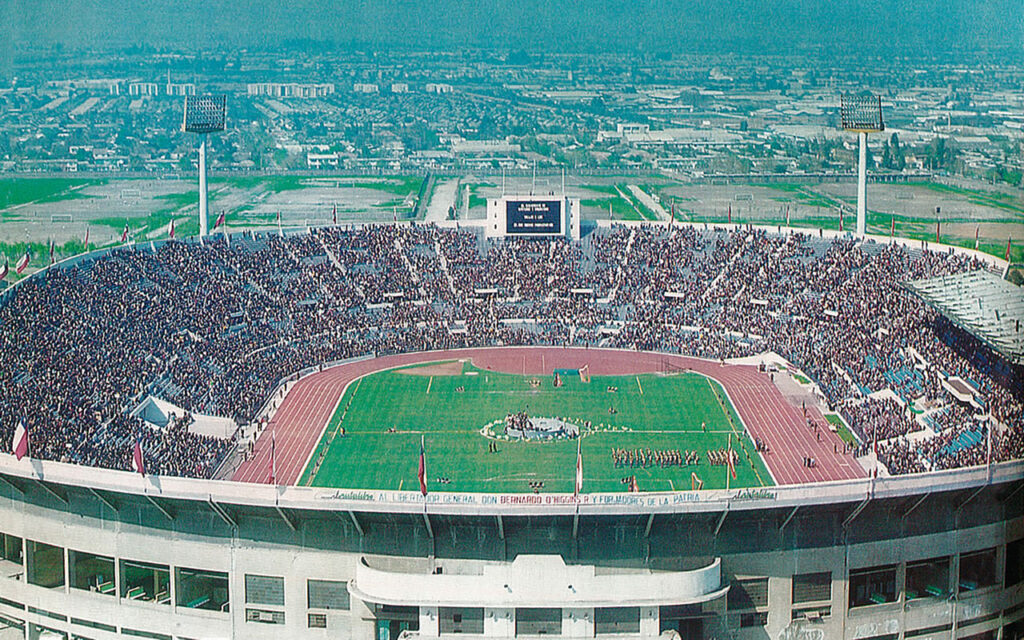THE EVENT

In: “Ministry of Housing and Urbanism Annual Report 1979” Source: Archivo Minvu
On 29 September 1979 Santiago’s National Stadium was filled with people from all over the city. The focus of this gathering was not a sporting contest nor a concert but a massive bureaucratic operation in which 37,000 property titles to pobladores were processed in a single day in an attempt to resolve decades of makeshift land occupation and policies.
The audience were mostly beneficiaries of Operación Sitio (Operation Site), a 1960s national self-help housing initiative that responded to Chile’s severe housing crisis by giving people access not just to urban land but to a private plot within the city. To its critics, it was referred to as Operación Tiza (Operation Chalk), since the chalk tracing of a semi-urbanised 9 x 18 metre plot was what most people received—in other words, bare earth. To be able to call a piece of the city their own, however distant from its centre, beneficiaries then had to demonstrate financial savings over several instalments before they would be advanced onto another list, this time not of a piece of land (since they were already occupying it) but a piece of paper with their property title inscribed upon it.
The Booklet
Weeks before the event the Ministry of Housing published a booklet in the official press along with a blueprint plan of the stadium. Sixty pages contained a long list of summoned people divided into the 17 communes of Greater Santiago, and in which more than 60 assorted slums were represented through various shantytowns and neighbourhoods. Each commune was then assigned a specific sector within the stadium (eg, 1, 2, 4-B, 1ª, etc), and a precise access door in the stand (eg, SS, RR, Q, J, HH, etc) which in effect created a complete grammar and aesthetic code connecting the building with the surrounding city.
